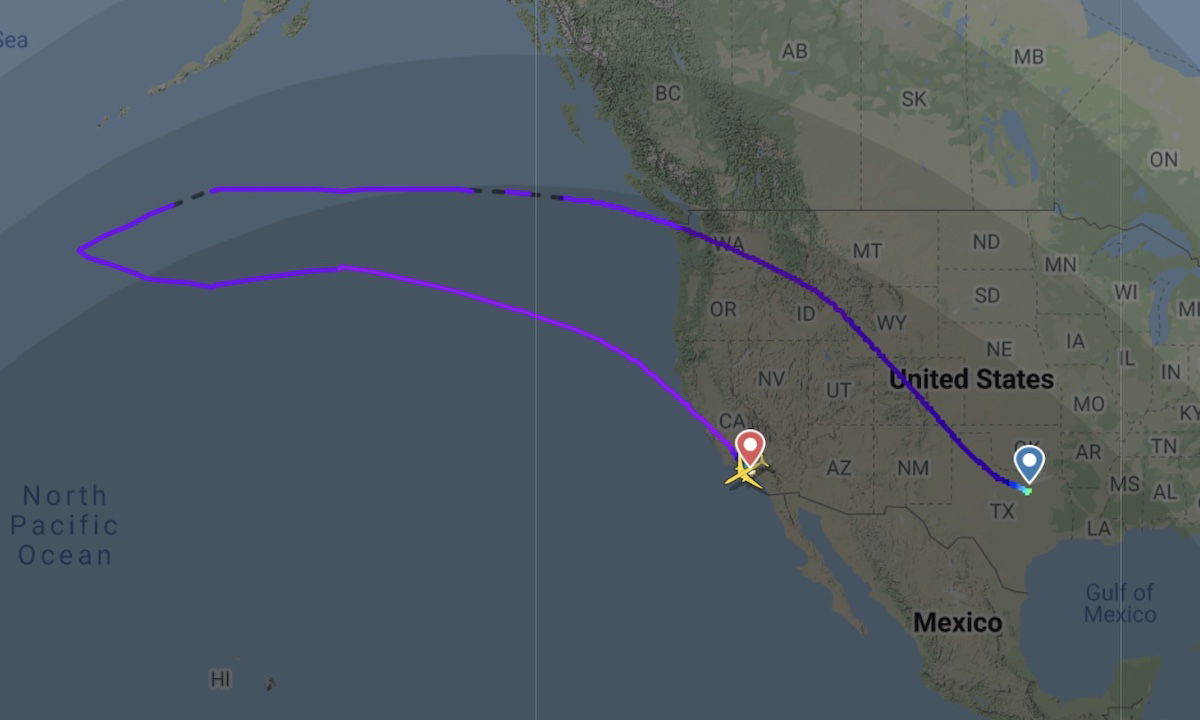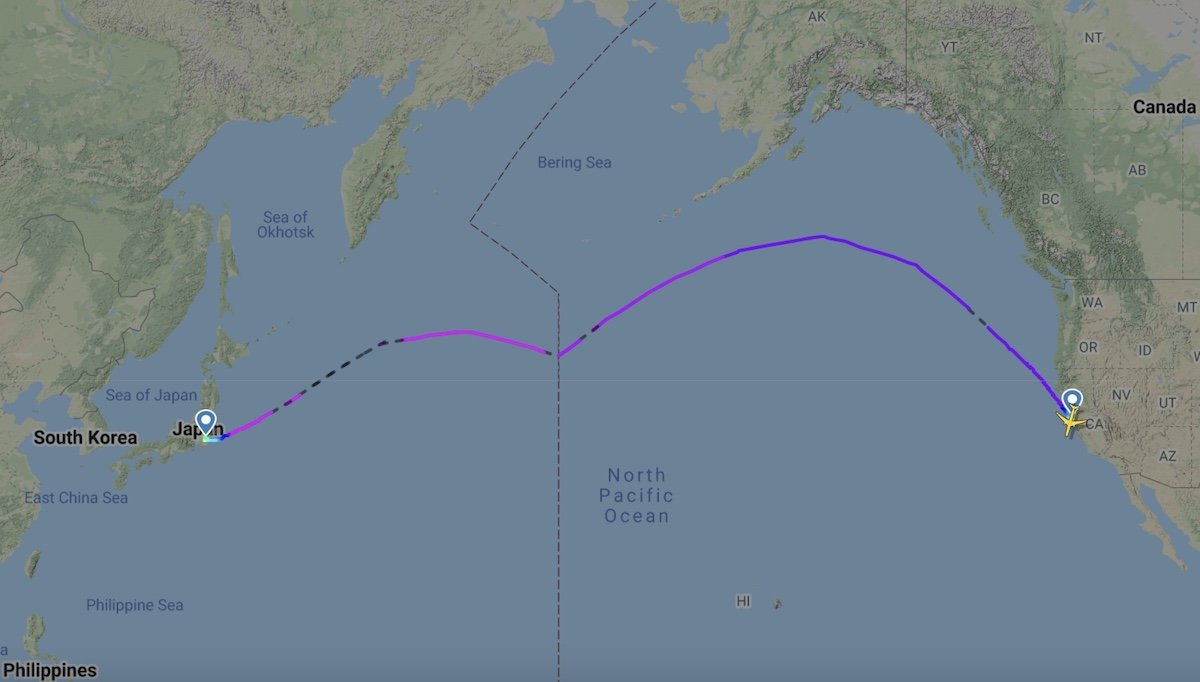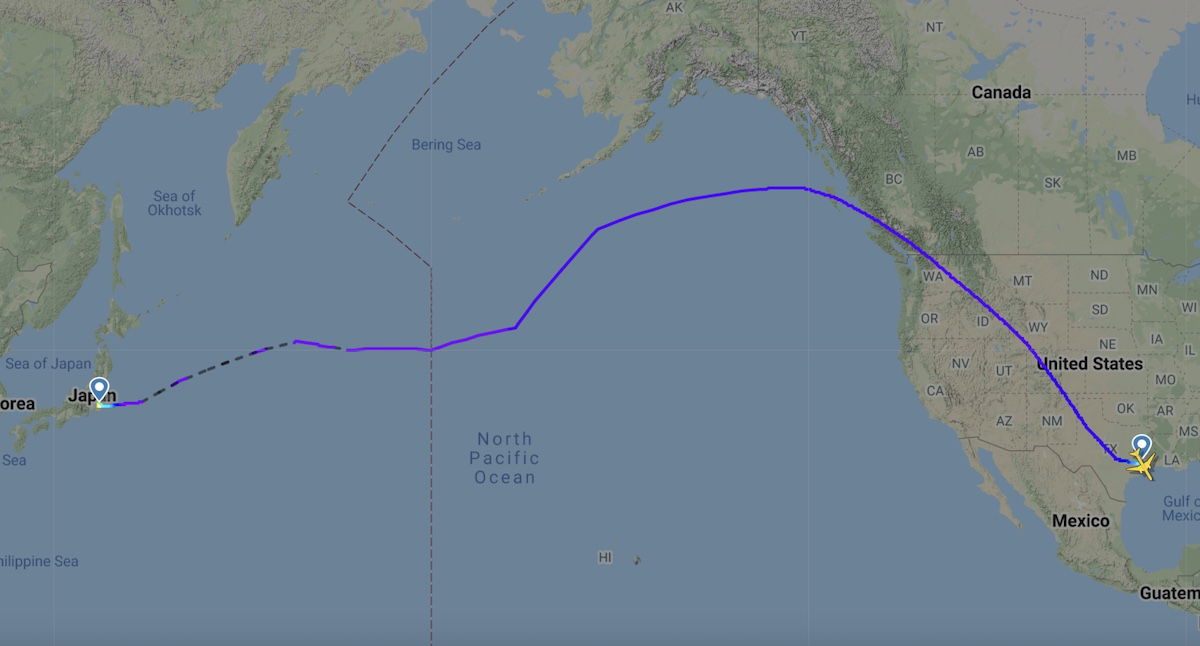An American Airlines Boeing 787-9 spent nearly 12 hours in the air from Dallas to Los Angeles. The plane wasn't flying at 100 miles per hour, but rather there was more to the story.
American Airlines flight AA61 was going to operate from Dallas to Tokyo. The flight was operated by a three year old Boeing 787-9. One of American's longer flights is blocked at 12 hours 55 minutes.
The flight left more or less as planned, and spent over seven hours on the standard course toward Narita, flying northwest to Washington, and then starting the Pacific crossing there, staying south of Alaska.
However, around 7hr25min after takeoff, shortly before reaching the International Date Line, the plane turned around back in the direction of the mainland. At this point the decision was made to fly to Los Angeles (LAX), and the plane landed there roughly 4hr20min after making its eastbound turn.
The plane was in the air for 11 hours and 50 minutes, yet it was only 1,235 miles from its origin. It isn't often you see a flight path like this.

The American Airlines flight was canceled due to weather conditions. This was due to a volcanic eruption.
There is a volcano on the east coast of Russia. US airlines don't use Russian airspace, but this is on the Pacific Ocean, not far from where most airlines crossing the Pacific would fly.
Ash from volcanoes can impact airplanes, so safety is always paramount. It's interesting that the American flight had to turn around halfway across the Pacific. That's despite the fact that there were other similarly timed flights.
The United Airlines flight from San Francisco to Tokyo was scheduled to arrive around the same time. The flight time was an hour longer than usual due to a rerouting as it flew further south than usual.

The United Airlines flight from Houston to Tokyo was scheduled to arrive around the same time. The flight time was an hour longer than usual due to a rerouting.

The logical question is why American had to return to the US while other airlines didn't. I think there are at least two likely explanations.
American's AA61 is operating as usual today, so it seems like this problem was solved quickly.
The American Airlines flight from Dallas to Tokyo was diverted to Los Angeles halfway over the Pacific. The flight only flew a short distance from DFW to LAX after spending 12 hours in the air.
The routes airlines could take were impacted by the volcanic eruption. Other airlines were able to change their flight plans even after takeoff, while American decided to turn back.
What do you think about the American flight from DFW to LAX?